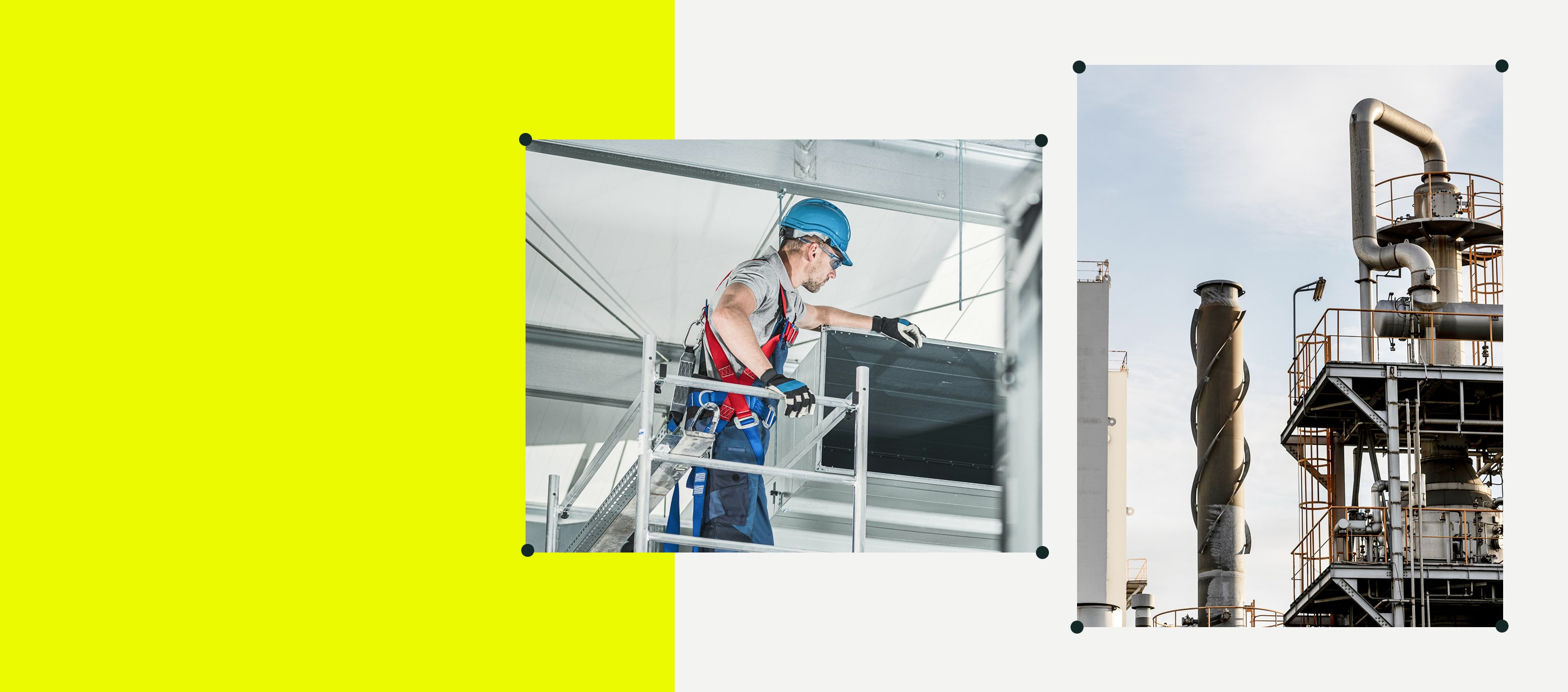Paper’s been around for 2,000 years. It’s familiar. Intuitive. It never runs out of battery, and it’s never asked anyone to update their password.
But, there’s a reason we don’t still send messages by carrier pigeon or write poetry on papyrus: some jobs outgrow their tools. Inspections are one of them.
In this article, we’ll look at why paper can’t keep up, and why digital inspection transformation is the answer for teams who need speed, accuracy, and accountability in the field.
Contents:
Paper-Based vs. Digital Inspections: Which Is Safer?
For a long time, field teams have relied on paper-based inspections because they worked. Or did they? As familiar as it may be, paper brings a set of risks that modern operations can no longer afford.
But if not paper, then what? Mobile apps? How do paper-based inspections really stack up against their digital counterparts? Let’s take a look by starting with definitions.
Paper-Based Inspections
Paper-based inspections use printed checklists, forms, or logs to record information during an inspection.
Many field teams know this process well: a team member fills out an inspection form by hand, often in less-than-ideal site conditions. And from there, it only gets messier.
Because that form might get emailed or dropped off at the office. The data might get left in a pile or inbox until someone has time to deal with it. None of this is fast.
If you give your paper-based inspections a close look, you might notice where flaws flare up:
- Mistakes are easy to make. When inspections happen back-to-back or notes are taken while walking, fields get missed. This can turn into a real liability during a regulatory OSHA audit.
- Paper sits around. Forms often sit in trucks, clipboards, or desks for hours or even days before anyone reads them. Scanning or emailing might help, but follow-up still isn’t happening in real-time.
- Forms go missing. It only takes one handoff, one gust of wind, or one spilled coffee to lose a record completely. And when inspections happen across multiple sites, it’s easy for documents to disappear. That’s one of the many reasons it’s more secure to manage your safety documentation with software.
- Checklists aren’t always up to date. One team might be filling out the latest inspection form. Another might be working off an older version. Without consistency, you can’t quite compare inspection results or understand what’s really going on.
- Paper wastes time and resources. Paperwork takes longer to fill out, it’s harder to keep track of, and someone usually ends up re-entering the same information later.
You can still run inspections on paper, but when you do, it’s harder to stay efficient.
Digital Inspections
Digital inspections use software on a phone or tablet to collect inspection data in the field. Inspection results are saved instantly, shared automatically, and easy to follow up on.
It feels like a more natural way for field teams to work. No pens to carry, no scanning back at the office, and no wondering who saw what.
When moving inspections to digital tools, you get:
- Fewer details to type. Standard information like location or asset ID can autofill based on the task, so inspections run faster and more accurately.
- Results available right away. As soon as the inspection checklist is submitted on the app, it’s automatically routed to the right people, and ready to be reviewed from anywhere.
- Follow-ups tracked in real time. If a hazard is flagged, you can assign corrective action, monitor and close it out in the same system.
- Data flowing into other systems. Inspection results can feed directly into dashboards or analytics platforms, so you can spot safety trends, uncover recurring issues, and mitigate risk early.
- Easy to pull records. Inspection data is securely backed up, searchable, and ready to export for compliance checks, internal reviews, or audits (OSHA, ISO 45001, etc.)
The impact isn’t just anecdotal. In a 2023 review of European food safety inspections, 92.7% of organizations using digital tools said it made data easier to access in the field, and 90.9% were automatically creating inspection reports onsite.
READ MORE: 10 great Fieldwire alternatives for paperless inspections
How to Make Inspections Paperless
Going digital doesn’t mean you tear down the processes you’ve spent years building. It means you will improve what’s already there. Provided it works well. Which will be the first thing for you to determine.
Here are other steps for you to start moving inspections from paper to digital in a way that sticks.
Step 1: See What’s Working (and What’s Not)
Take a good look at your inspections. What gets checked? How often? Where does the information go once it’s collected?
Don’t try to find answers to these questions alone. Talk to your inspectors out in the field, the supervisors who review the forms, and the teams who interpret the data. They’ll give you a good idea of what’s working in your processes and what really isn’t. You’ll want to keep this information in mind for the next step.
Step 2: Decide What You Need and Choose Your Tool
Here’s where you figure out what exactly you’d like your digital system to do.
Some of this will depend on your industry and regulatory requirements, some on your internal policies, and some on the specific challenges you’re trying to solve by going digital.
If you’re looking for a user-friendly tool that’s built for field use, Fluix is one option worth exploring. This inspection management software gives teams control over how inspections are created, tracked, and reviewed.
Whatever tool you choose, at a minimum, it should help you:
- Uncover patterns across inspections to improve compliance and reduce risk (get the full picture on what data-driven safety can do here)
- Keep inspections records secure, time-stamped, and ready for audits
- Make it easy to assign corrective actions and track what gets fixed
- Work on mobile devices, with or without internet access
READ MORE: How Dyna Crane saves $300K a year with digital inspections and safety workflows
Step 3: Train People the Way They’ll Use It
Once you’ve picked your paperless inspection tool, make sure your team knows how to use it comfortably in the field.
Set up live, hands-on sessions where they can walk through the same tasks they’ll be doing on the job. For example, inspectors should learn how to fill out checklists optimally, capture photos of mock hazards, and submit their forms.
And, break training out by role – inspectors, supervisors, safety leads—so each group can focus on the features they’ll use.
Step 4: Do a Dry Run First
There’s no need to go all in on day one.
Digital inspection transformation should start with one type of inspection at one site. That could be something like a fall prevention check or a routine equipment inspection.
Afterward, talk to the inspectors that used it. Learn what helped, what confused them, and what took too long. Make changes based on their experience so your system makes more sense going forward.
Step 5: Watch, Tweak, and Keep Going
After rollout, the job shifts from building your system to observing it. Pay attention to how it’s being used. Are inspections completed the way they should be? Are flagged hazards followed up on? Do certain steps keep experiencing delays?
These patterns will tell you a lot. You won’t get perfection right away, so keep an eye on whether your digital processes are holding up under real conditions. And if they aren’t, fix them. That’s how a good system takes shape.
The Final Word
Moving inspections from paper to digital isn’t fun. There are steps to take, habits to shift, and new passwords to get used to. But you’ll get there, and when you do, you’ll have the tools you need to perform as best you can.
Fluix is field productivity software designed for teams that need flexibility, consistency, and a clear view of their inspections. Whether it’s daily checks, audit prep, or spotting trends over time, Fluix keeps your inspection processes connected and under control.





